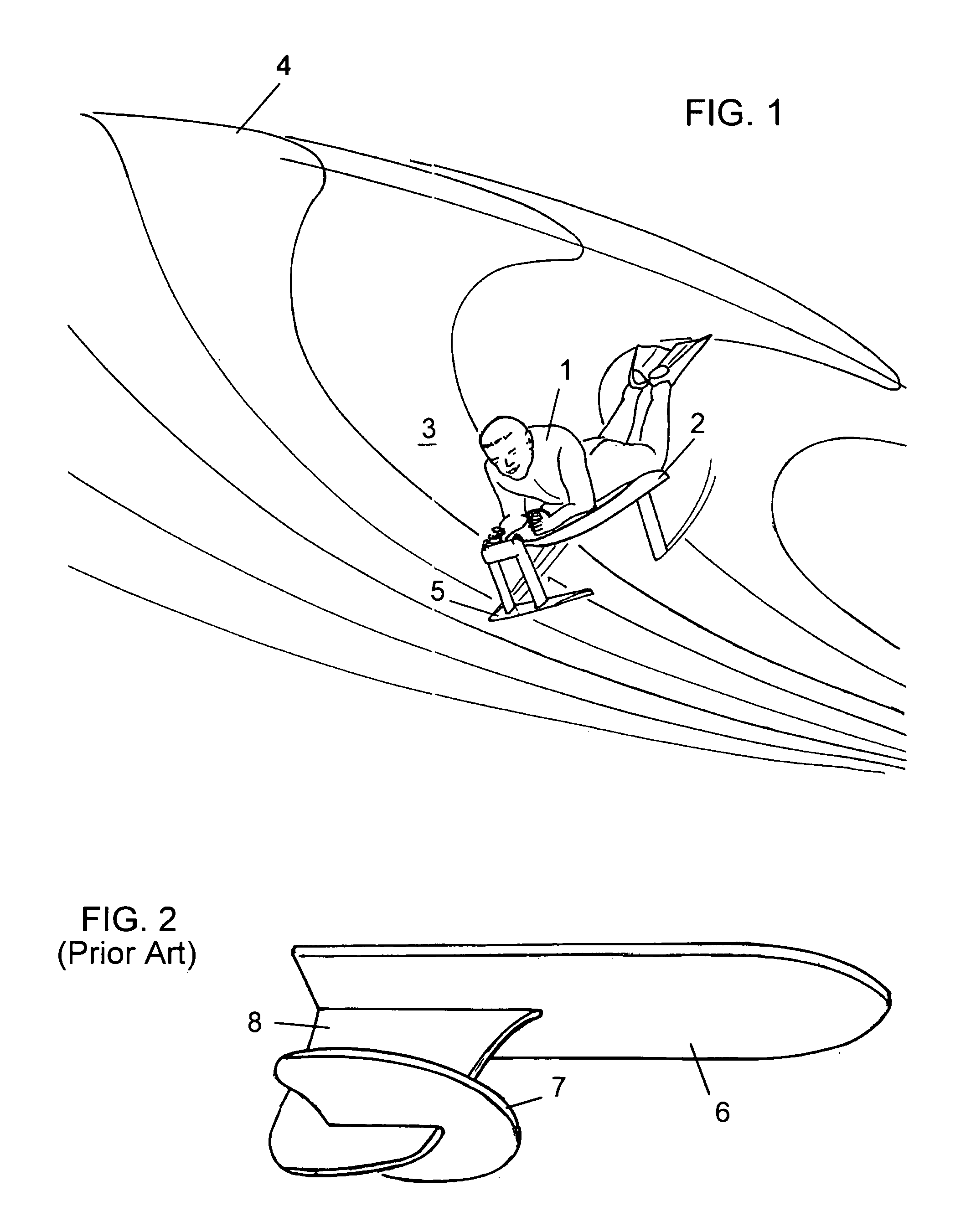Hydrofoil surfing board
a technology of canard foil and surf board, which is applied in the field of improving waveriding vehicles, can solve the problems of undesirable design and stability, inability of riders to successfully complete the ride, and considerable restrictions in the side-to-side direction, and achieves the effects of easy and rapid monitoring, increased drag, and substantial drag
- Summary
- Abstract
- Description
- Claims
- Application Information
AI Technical Summary
Benefits of technology
Problems solved by technology
Method used
Image
Examples
Embodiment Construction
[0080]My invention is a surfboard incorporating a fully-submerged hydrofoil and a novel surface-piercing hydrofoil arranged in a canard configuration as shown in FIGS. 1, 5, 6, and 7. The preferred riding position is with the surfer prone. This position has a number of significant benefits. First, the board and rider are more compact than a kneeling or standing surfer, and thus the board and rider fit better into the “curl” of the wave. Second it is a more stable position for the rider when aggressively maneuvering the board. Third, the resulting moment of inertia about the roll axis is reduced, so the roll rate will be increased and the maneuvering capability enhanced.
[0081]It can also be ridden kneeling by bending forward, resting the elbows and arms on the deck of the craft, and grasping the hand grips. However, some maneuvering capability and control stability will be sacrificed. It is unlikely that the craft can be ridden in the standing position. As discussed in the Background...
PUM
 Login to View More
Login to View More Abstract
Description
Claims
Application Information
 Login to View More
Login to View More - R&D
- Intellectual Property
- Life Sciences
- Materials
- Tech Scout
- Unparalleled Data Quality
- Higher Quality Content
- 60% Fewer Hallucinations
Browse by: Latest US Patents, China's latest patents, Technical Efficacy Thesaurus, Application Domain, Technology Topic, Popular Technical Reports.
© 2025 PatSnap. All rights reserved.Legal|Privacy policy|Modern Slavery Act Transparency Statement|Sitemap|About US| Contact US: help@patsnap.com



